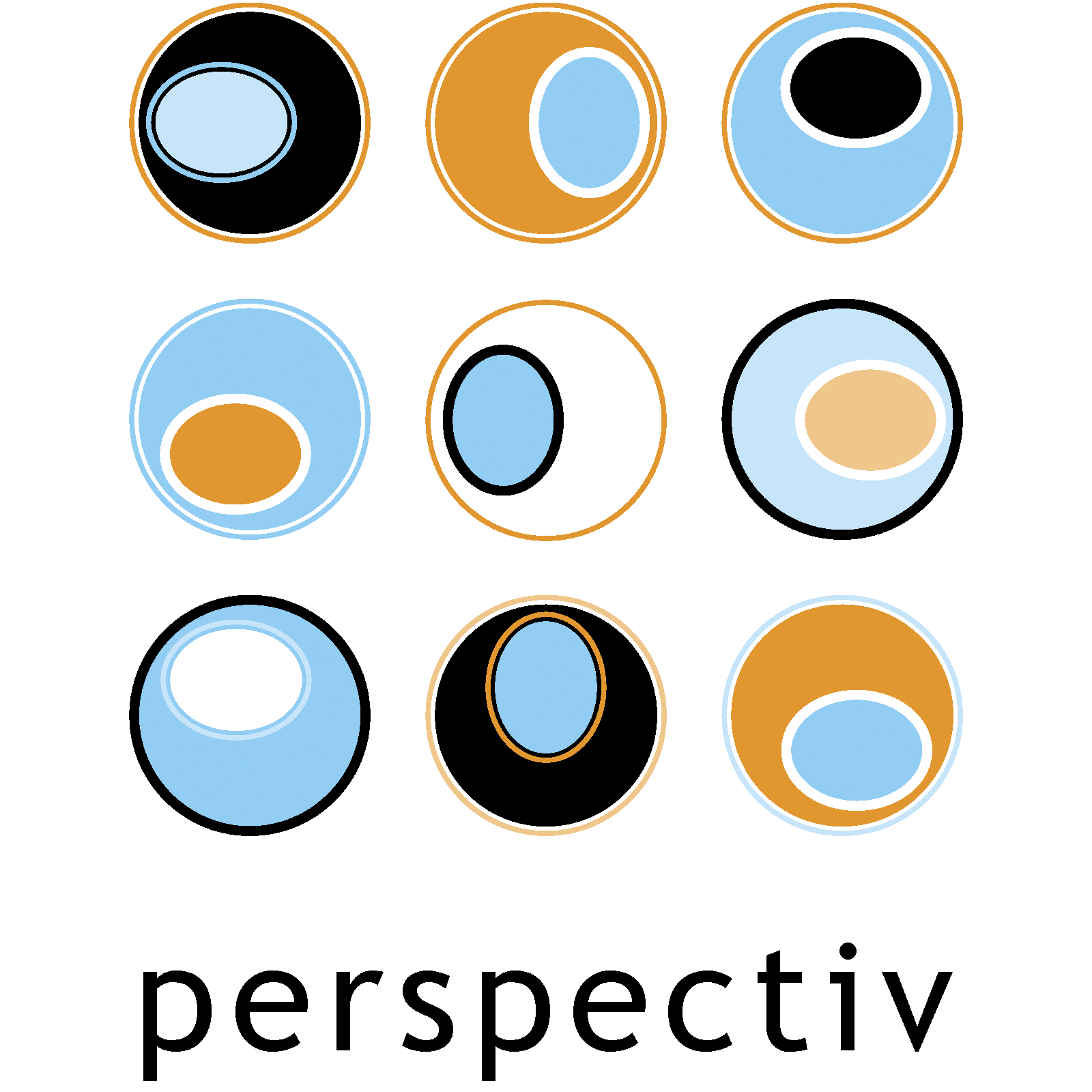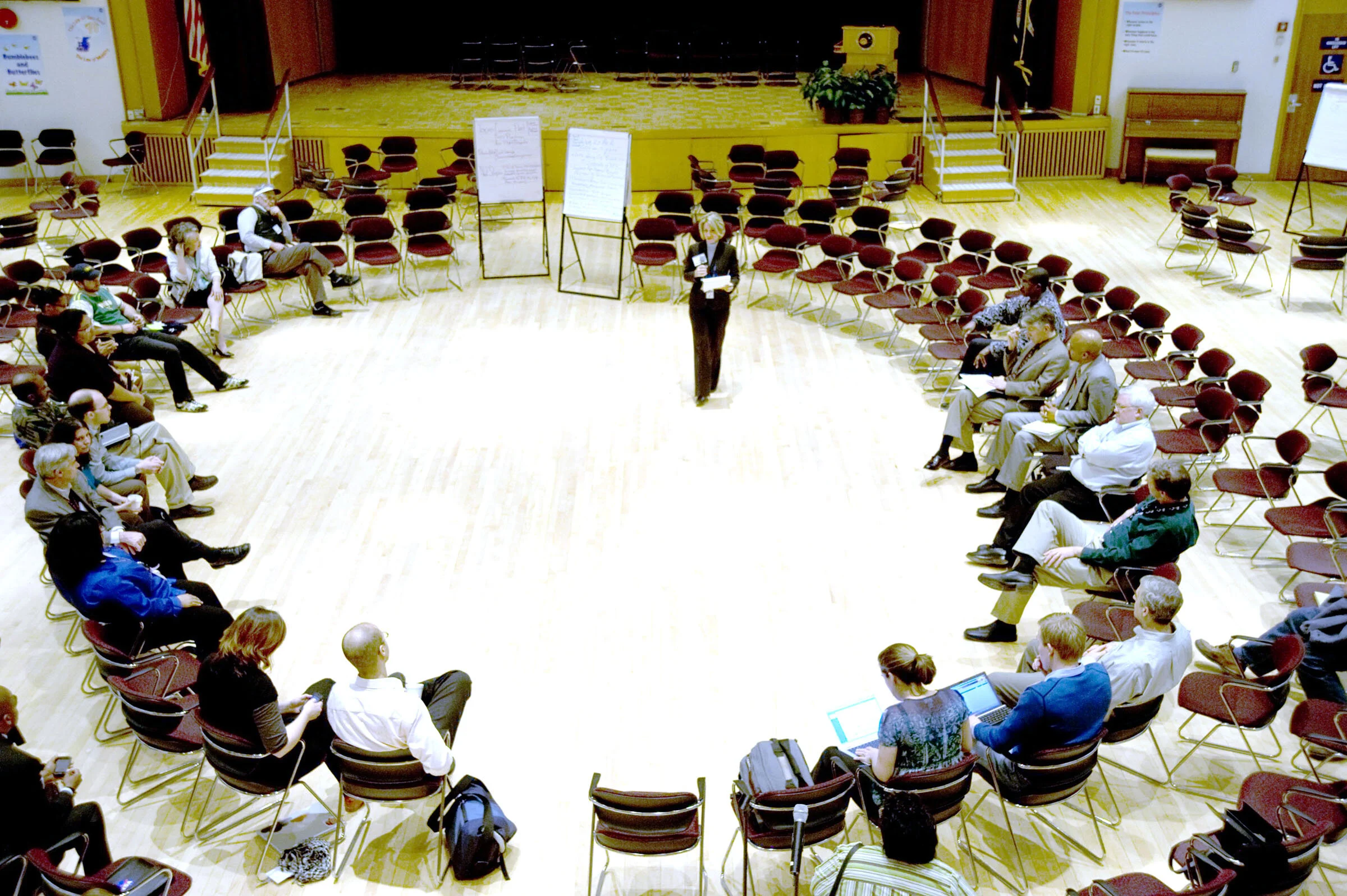Open space: an overview
Background
They say we have moved into the information age, but that is not completely accurate. What we are witnessing is not just an explosion of information. We are seeing the proliferation of just about everything. No matter whether it is street cultures or nation stages, drugs or spiritual practices, providers or consumers, TV channels or distribution channels, pluralism is now the norm.
It is becoming increasingly difficult to find a way through all of this proliferation, diversity and complexity. Traditional methods do not always work, but Open Space is a way of getting significant work done when faced with dynamic uncertainty. It enables widely differing groups of people to work together on issues of mutual concern and strategic importance. See Problem types in organisations for more information.
THE OPEN SPACE PROCESS
The primary purpose of Open Space is to create a forum where issues and opportunities are surfaces, discussed and translated into action. Originally developed by Harrison Owen who observed how at conferences people self-organised at the coffee and lunch breaks and then reported that the most valuable aspects of the conference were the conversations they had had with people – not the actual conference sessions themselves. (Interestingly, the coffee machine has been reported as the most important piece of technology for knowledge management!)
In a similar way, Open Space is a process for organising a self-managed gathering where participants create their own programme of work sessions linked to an explicit theme. In these simultaneous sessions people discuss their heartfelt concerns, explore issues and opportunities and find new ways forward. An Open Space gathering brings people together – often in large numbers and usually representing enormous diversity – to contribute their views, share their ideas and develop plans for creative and collaborative action.
The open space approach is particularly effective when:
There are high levels of task and/or behavioural complexity and uncertainty
There is a requirement to involve diverse groups with different agendas and viewpoints
There is little clarity and no obvious existing ways forward – the issue is clearly defined, it is unclear what needs to be achieved, or the way forward is unclear
The responsibility for changing sits with those who attend
There is a need to produce results quickly
There is a need for high socialisation.
A prerequisite is that the focal issue or theme must be of genuine concern to all involves. The group can be of any size – from 10 people to more than 1,000. All relevant stakeholders are invited and participation is voluntary. The event can be any length – from an hour to several days.
WHEN NOT TO USE OPEN SPACE
If you use Open Space in any of the following situations, success – if any – is likely to be short lived:
You treat the gathering as a one-off event and pay little or no attention to the follow through process
You introduce Open Space as the latest ‘flavour of the month’ panacea – if all you have is a hammer then everything can look like a nail
You exclude key stake holdergroups
There is no design group, or the design group blindly follows the receipt book instead of working with the underlying principles
You ignore the facilitation principles
You use the gathering as a ploy to get buy-in through subtle manipulation.
These watch-outs apply to all inclusive processes and importantly organisations need to be ready for collaborative working. If your organisation is not ready for this, plans involving collaborative gatherings should be abandoned.
AN OPEN SPACE MEETING IS BASED ON FOUR PRINCIPLES
N.B.: A principle is ‘a general truth forming a basis for reasoning or action.’
Whoever comes are the right people. Participation is voluntary and more participants are not necessarily better.
The start and end times can be flexible. Depending on circumstances, time can follow the energy of the group as opposed to the energy of the group being constrained by time. This is particularly relevant to the end time – when its over its over. If there is no more to say, move on.
Que Sera, Sera – Whatever happens is the only thing that could happen. Let go of expectations.
If you find yourself in a situation where you feel you are either not learning or not contributing, it is your responsibility to use your two feet to go elsewhere.
WHAT HAPPENS AT AN OPEN SPACE EVENT?
Everyone meets in one place.
The theme is shared.
The facilitator describes the four Open Space principles and explains what is going to happen.
Either from asking people in advance or at the event, anyone who feels so inspired can offer to convene one or more sessions (such as presentation, workshop, dialogue, conversation, discussion, debate, task force) by creating a simple poster showing the title of the session and their name, making a brief announcement to the whole group and choosing a time and a space for the session to take place.
The posters are fixed to the wall and participants sign up for the sessions that they wish to attend (some negotiating usually occurs at this point: conveners offering sessions on similar topics may decide to join forces and people may ask certain conveners to re-time their sessions to make participation possible).
Participants then self-organise and choose which sessions to go to based on what interests them.
The large group reconvenes at certain points and at the end of the event to share what has transpired.
There is often an additional plenary session for prioritising issues and developing action plans in project teams.
Also, sometimes at the end of the event it can be arranged for everyone to receive a set of reports from all of the sessions including any action points.
BELIEFS OF OPEN SPACE COLLABORATIVE WORKING
The whole has greater wisdom than the sum of the parts
Include everyone – external as well as internal stakeholders – who can contribute information, ideas and different perspectives, everyone whose support is vital to the success of the project and everyone who has the power to make things happen.
Everything derives from purpose and outcomes
Plans cannot be made until purpose and outcomes are clear, so first spend time agreeing the reason for your collective existence and then decide what you want to achieve together.
Principles determine behaviour
Agree your guiding principles for working together, such as being open and honest with each other, treating one another with respect and honouring commitments.
An honest assessment of current reality is a solid foundation on which to build the future.
People must be completely honest, even if this means raising painful or taboo subjects. The completed picture of current reality is likely to be messy and complex.
Ownership and commitment emerge from a fair approach
Collaboration will only be effective if parent-child relationships are abandoned in favour of adult-adult ones.
People need to feel they are part of a community
What really matters to most people is not money – it is feeling part of something bigger than themselves, something they can believe in that brings meaning to their lives.
PRINCIPLES FOR DESIGNING OPEN SPACE GATHERINGS
The most effective design is one created by a design team
The design of collaborative gatherings is not done by an elite group or delegated to one of two people but is created by a design team composed of people from the different stakeholder groups that will be present at the gathering.
Collaboration is a continuing process, not an event
Treat the gathering as one small part of a continuing process. Put in place a temporary infrastructure to coordinate the efforts of any project teams that form during the gathering and ensure that these teams get support and resources from the formal organisation. Think about how to involve those who will not be present at the gathering and consider how to use internal communication and other tools to keep everything moving forward.
The people attending the gathering are active participants, not a passive audience
Do everything possible to minimise dependence and passivity, maximise active participation and mobilise individual and collective power. Ensure that chairs are arranged in one or more circles and small groups are self-facilitated. Exclude games, training modules and speeches.
People need time to connect and reflect
Give participants time to connect with themselves, their fellow participants and the task, and time for reflection. And no exceptions.
Wisdom comes from an appreciation of the whole system
Invent activities that enable participants to experience the whole system in action and understand the context in which it operates.
Make decisions in real time, not offline, and begin implementation immediately
Do not allow leaders to use collaborative gatherings to gather data for later behind closed doors decision making.
Engagement means engaging the whole person
Make sure that activities engage the whole person – mind, body, emotions and spirit, and involve all of the senses – sight, sound, taste, smell, touch and movement.
Effective gatherings require healthy conditions
Choose a venue where the main meeting rooms have plenty of daylight and ventilation, the seating is comfortable and good food is served quickly. Let participants help themselves to tea, coffee, soft drinks and fruit throughout the day.
PRINCIPLES FOR FACILITATING OPEN SPACE GATHERINGS
The facilitator is there to ‘hold’ the space
Create a safe space where participants feel free to express themselves openly and take risks. Hold the vision and encourage the group to stay open to new possibilities and creative breakthroughs, even in the midst of chaos, conflict and breakdown.
Facilitation requires a participant focus
Work with what is happening rather than what you think should be happening and highly responsive to the needs of the whole, making any necessary adjustments to the programme right there on the spot. Assume that the group knows best what it needs at any given moment.
Less is more
Take a minimalist approach. Never do anything yourself that could be done by participants. Ensure that power remains with the group and do not do rescue work. Only make an intervention when absolutely necessary, preferably at the invitation of the participants.
There is strength in diversity (if it is nurtured and valued)
Embrace all opinions and viewpoints as part of current reality. Assume that behind all behaviour there is a positive intention. Ensure that those who express opposite points of view or behave unconventionally are not marginalised by the group. Ask: “does anyone else feel like that?”
Please contact us would like to know more about:
Our system, processes and tools for innovation, problem solving and change
The capabilities that separate the highest innovation performers from the lowest
How we might help address a business challenge you have
How to develop your organisation’s innovation and change capabilities.

